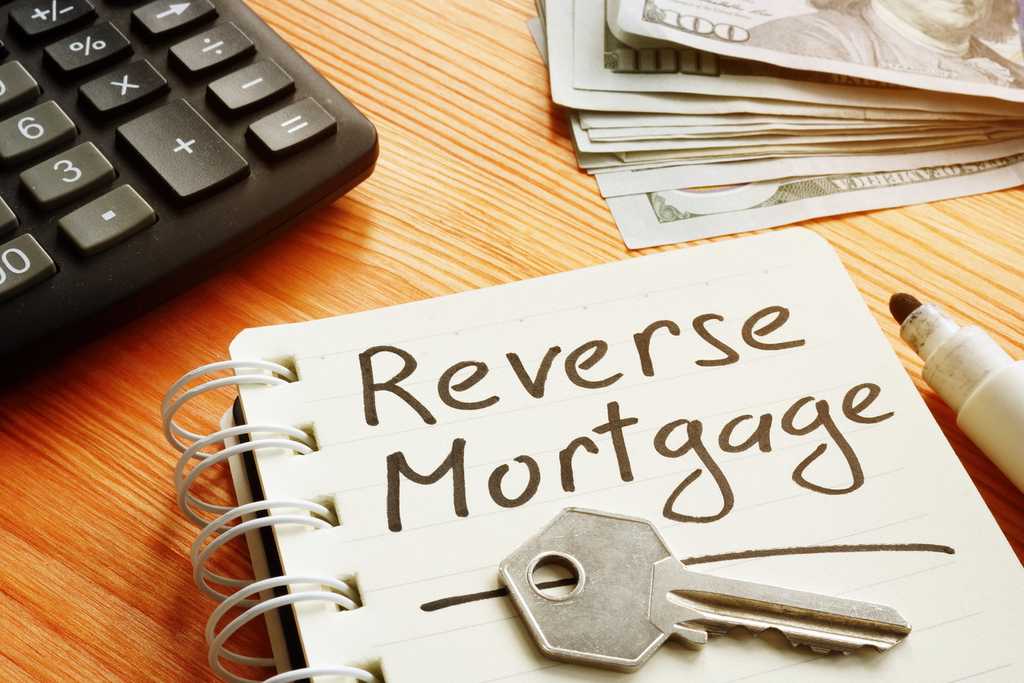As Americans grow older, their most valuable asset is often the equity that they have in their homes. At the same time, seniors may not receive enough income from Social Security and their retirement savings to pay off their mortgage, maintain their home and support their lifestyle. A reverse mortgage is a powerful financial tool that can help seniors to utilize the equity in their homes to meet their living expenses or their medical needs.
What Is a Reverse Mortgage
A reverse mortgage is a loan that uses home equity as collateral. But while a traditional mortgage requires the borrower to make monthly payments towards the loan, a reverse mortgage makes loan payments to the homeowner. That loan is then repaid, including principal, interest and fees, when the borrower no longer lives in the home. The repayment can be required when the homeowner moves, sells the property or dies.
How a Reverse Mortgage Works
Unless your home has dramatically fallen in price, it will have significant equity. Your home’s equity is equal to the value of the home, minus the remaining balance of your home mortgage. A reverse mortgage utilizes the equity in your home to make payments to the homeowner. These payments are a loan that is only repaid when the homeowner moves from the house, sells it or passes away. Therefore, you can think of a reverse mortgage as a loan in advance of the sale of your house.
When the homeowner moves or dies, the home is sold and the proceeds are used to pay for the reverse mortgage loan’s principal, interest, mortgage insurance and fees. If there are still any remaining funds left over, the rest goes to the homeowner, if he or she is still living. If the homeowner deceased, then the remaining proceeds become part of the homeowner’s estate. And since the funds received from a reverse mortgage are considered to be a loan advance, they are not taxable.
What Can A Reverse Mortgage Be Used For?
There are no limitations on what you can use the proceeds from most reverse mortgages for. Common uses include eliminating or reducing your monthly mortgage payments, paying for medical care services and supplementing retirement income. Others can use a reverse mortgage to create cash reserves, to delay collecting Social Security benefits or to pay off other debts. While most reverse mortgages allow homeowners to use the funds for any reason, the exception is single-purpose mortgages that require the borrower to use the funds for a specified purpose that’s approved by the lender in advance.
Types of Reverse Mortgages
There are three types of reverse mortgages, each designed for a specific need:
Home Equity Conversion Mortgage
The most common is a Home Equity Conversion Mortgage (HECM). An HECM is a special type of loan that’s exclusive to homeowners that are 62 years of age and older. These federally-insured loans are backed by the U. S. Department of Housing and Urban Development (HUD). The amount that you can borrow will depend on your age or the age of your spouse, the current interest rate and the value of your home.
Single-purpose reverse mortgages
These types of reverse mortgages are offered by some state and local governments, and by non-profit organizations. These are often the least expensive option, but they’re not available everywhere. Also, these loans may only be used for a single purpose, which the lender specifies. For instance, the borrower may agree to use the loan only for home improvements or to pay for property taxes. Most homeowners with low or moderate income can qualify for these loans.
Proprietary reverse mortgages
These reverse mortgages are private loans backed by the companies that develop them. These loans are less regulated than home equity conversion mortgages, and are not federally insured. Typically, a proprietary reverse mortgage is for homes that exceed the Federal Housing Administration (FHA) limit, which was set at $765,000 for 2020. So these can make sense for wealthier homeowners in more expensive homes.
Reverse Mortgage Requirements
Not everyone can take out a reverse mortgage. For example, a home equity conversion mortgage, which is the most common type, is only for homeowners ag 62 and above. Other requirements include having your home be your primary residence during the majority of the year. You also have to have paid off our mortgage or have a relatively low balance that you can pay off when you close on the reverse mortgage. However, you can use funds from the reverse mortgage to pay off the original mortgage.
Another requirement is that you cannot be delinquent on any federal debt, including federal income taxes or student loans. However, you can use funds from a reverse mortgage to satisfy those debts. Another requirement is that you also have to agree to set aside money from the reverse mortgage to pay for expenses related to the upkeep of the property, including maintenance, taxes and insurance.
And before you can close on your reverse mortgage, your property must be in good shape. In some cases, the lender may require repairs to be made before you can qualify for a reverse mortgage.
Pros and Cons
Reverse mortgages have several advantages. First, those who are 62 and over can use a reverse mortgage to get cash out of their home, which is often their biggest asset. For seniors with significant home equity, but with little retirement savings, a reverse mortgage can be an ideal way of meeting their living expenses while remaining in their home. Furthermore, a reverse mortgage can help meet all of the costs of home ownership including property taxes, maintenance and insurance. For many seniors, this will allow them to live in their own home rather than move to an assisted living facility.
However, there are several disadvantages to reverse mortgages. A reverse mortgage is only valid during the time the homeowner occupies the home. Therefore, any other household members will lose their right to remain in the house after the homeowner moves or dies. This can include friends, relatives or roommates that share the house with the homeowner.
Also, it’s possible that a homeowner could outlive the proceeds from the reverse mortgage. This is a risk when using some plans that don’t offer a lifetime income. This includes lump sum plans, term plans and those that are simply a line of credit. With these types of reverse mortgages, it’s possible to use up all of the equity in a home before the homeowner moves or dies.
Rules Governing These Mortgages
There are several rules that reverse mortgage lenders need to comply with.
- You must own your home and have the mortgage fully or mostly paid off.
- The home has to be a single family residential unit, condominium, townhouse or manufactured home built on or after June 15, 1976. The Federal Housing Administration (FHA) rules say that cooperative housing (co-op) owners can’t obtain reverse mortgages because they don’t own the real estate, rather they actually own shares of a corporation. These types of co-ops are common in New York, and are also prohibited by state law. However, reverse mortgages are permitted for one- to four-family residences and condos.
- You must be 62 years of age or older.
- You must complete a HUD-approved counseling session, due to the nature of the reverse mortgages and the prevalence of scams.
- Borrowers have to pay their property taxes and homeowners insurance.
- You are required to keep the home in satisfactory condition.
- You must be a full-time resident. Those who stop living in the house for longer than one year must repay the loan, typically by selling the house. This is true even if the homeowner is in a longer-term care or other medical facility.
Fees Involved
When considering a reverse mortgage, one of the expenses you must account for are the fees, many of which are limited by the federal government. These fees include:
- An origination fee
- An up-front insurance premium
- Ongoing mortgage insurance premiums
- Loan servicing fees
- Interest charges.
- Mortgage insurance premium of 0.5% of the amount borrowed.
- The HUD approved counseling session also costs approximately $125.
Bottom line
A reverse mortgage is a powerful tool to help older Americans tap the equity in their homes when they most need it. But like any financial decision, you should take the time to learn about the pros and cons of reverse mortgages and the different kinds that could be available to you. By understanding how reverse mortgages work, what the fees are and what rules you have to comply with, you can make the right decision for your needs.

